March 04, 2024
5 Jyotirlingas in Maharashtra
CM Content Team

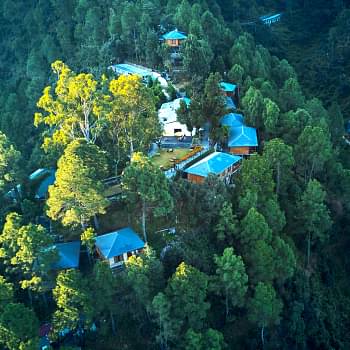
View all
140+
Resorts
March 04, 2024
CM Content Team
Maharashtra is known for many things, but it is revered as the blessed land where 5 of the 12 Jyotirlingas reside. People across the nation highly visit the 5 Jyotirlingas in Maharashtra. Each one offers a unique experience, and all 5 offer a feeling that can’t be put into words.
We have compiled a list of all 5 Jyotirlingas in Maharashtra for you to visit.
|
5 Maharashtra Jyotirlinga Name |
Jyotirlinga Places in Maharashtra |
|
Trimbakeshwar Jyotirlinga |
Nashik |
|
Bhimashankar Jyotirlinga |
Pune |
|
Grishneshwar Jyotirlinga |
Aurangabad |
|
Aundha Nagnath Jyotirlinga |
Hingoli |
|
Parli Vaijnath Jyotirlinga |
Beed |
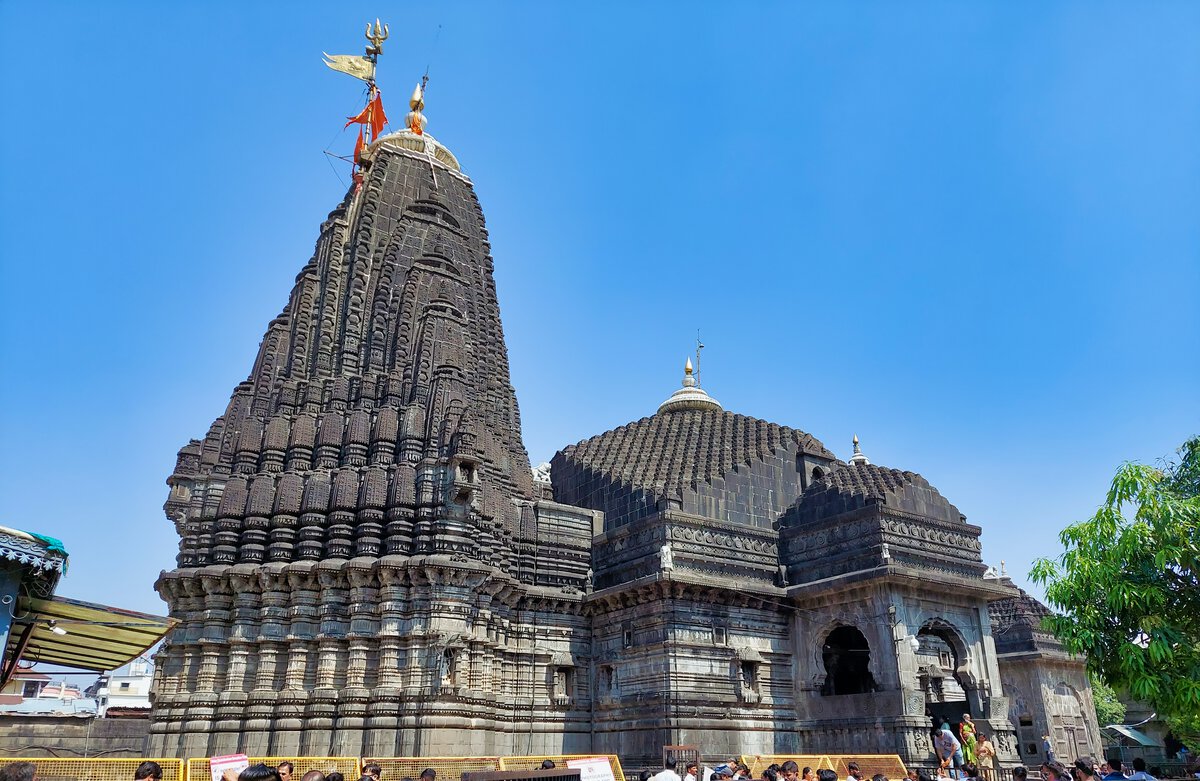
Trimbakeshwar is a town situated in the Nashik district of Maharashtra. It is renowned for the Trimbakeshwar Shiva Temple, which is one of the 5 Jyotirlingas in Maharashtra, the sacred abodes of Lord Shiva. The temple's location is significant as it is near the origin of the Godavari River, the longest river in southern India.
The Trimbakeshwar temple is unique among the Jyotirlingas because the Shiva Linga here has three faces, or mukhas. These faces symbolise the Trimurti – the Hindu trinity of gods: Brahma (the creator), Vishnu (the preserver), and Shiva (the destroyer). This embodiment signifies the all-encompassing nature of Lord Shiva, encompassing the roles of creation, preservation, and destruction.
The temple is a significant pilgrimage site, attracting devotees from all over India. Its importance is heightened during the Kumbh Mela, a religious gathering that is one of the largest in the world.
The architecture of the Trimbakeshwar temple is also noteworthy, with intricate carvings and a majestic structure that reflects the grandeur of ancient Indian temple architecture.
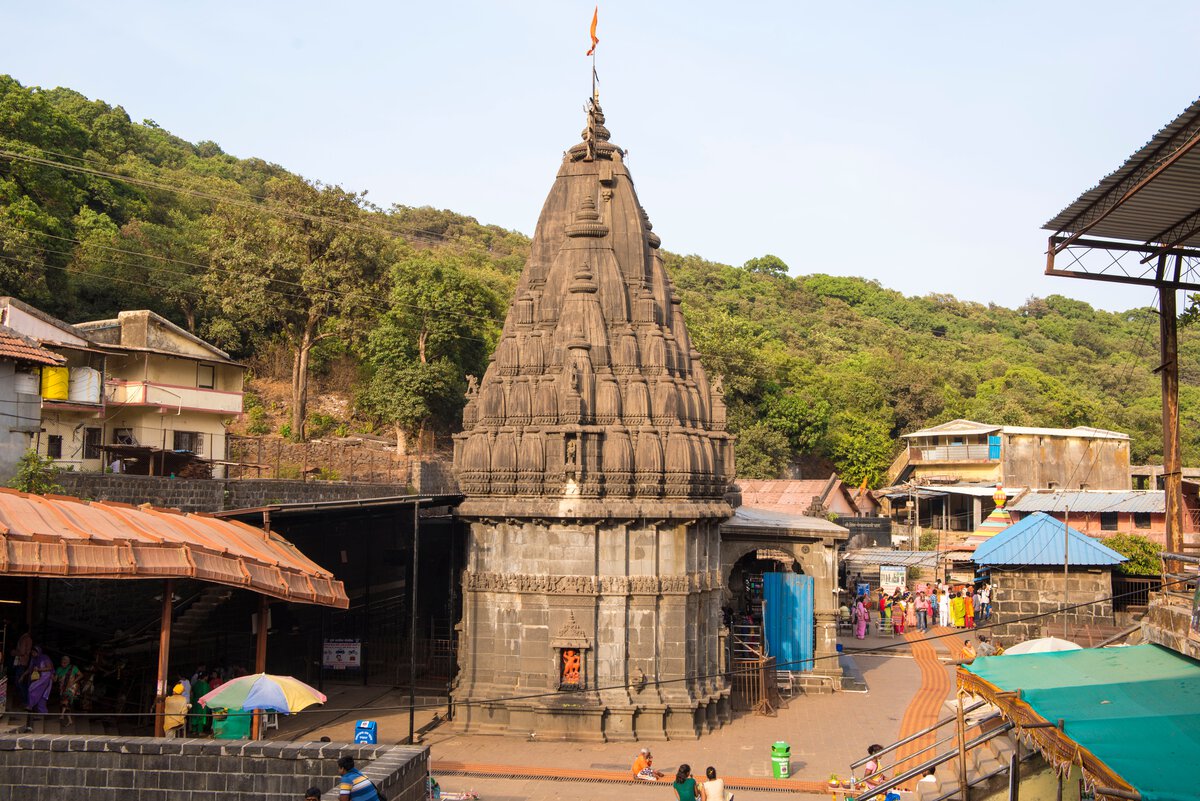
The Bhimashankar Temple's architecture is a fascinating mix of ancient and modern styles, showcasing the evolution of design over the centuries. The older parts of the temple exhibit classic Nagara-style architecture with intricate carvings and sculptures, while the newer sections feature more contemporary designs.
Apart from being known as one of the 5 Jyotirlingas in Maharashtra, Bhimashankar is also known for its location. It is near the source of the Bhima River. This river is one of the major tributaries of the Krishna River and holds significant importance in the region's agriculture and daily life.
The surrounding area of Bhimashankar is recognised as a biodiversity hotspot and has been designated as a wildlife sanctuary. The sanctuary is home to a wide variety of flora and fauna, including the Indian Giant Squirrel, also known as the Malabar Giant Squirrel, which is the state animal of Maharashtra. The dense forests and rich biodiversity make Bhimashankar a spiritual retreat and a haven for environmentalists and wildlife enthusiasts.
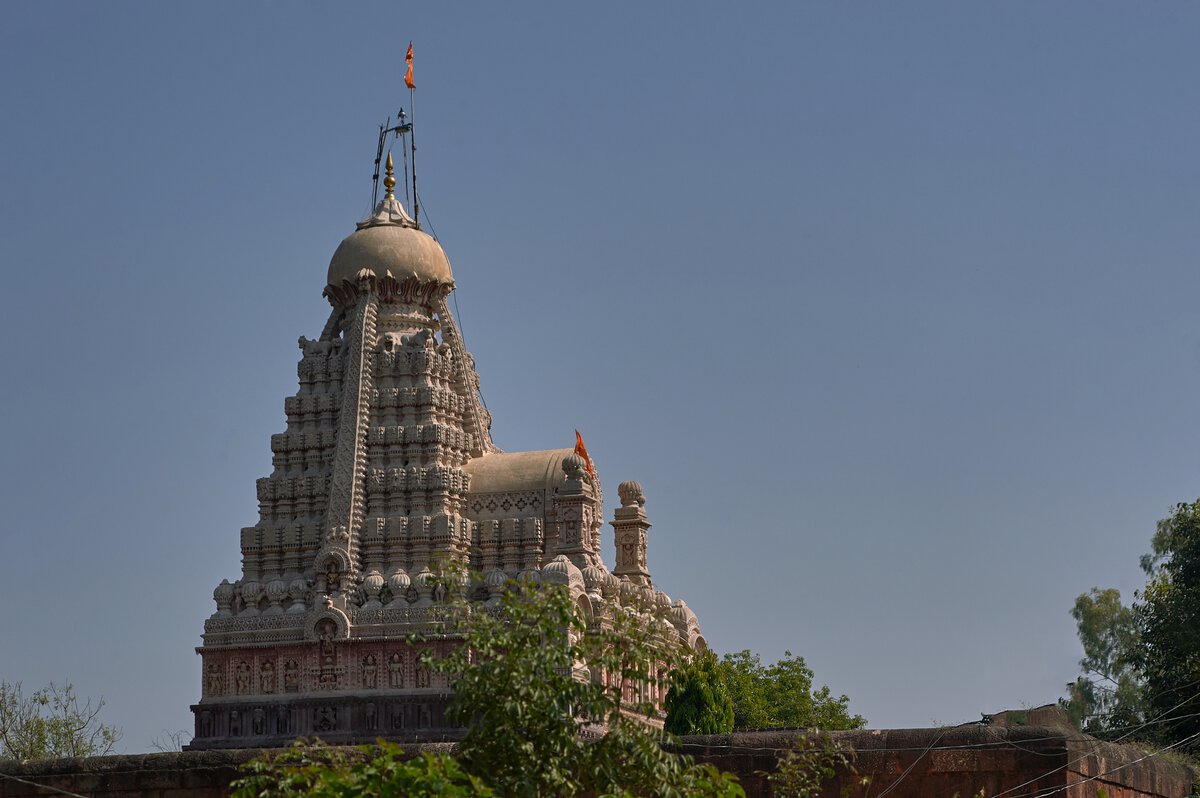
The Grishneshwar Temple is renowned for its exquisite carvings and sculptures that adorn its walls and pillars. These intricate designs showcase the skill and artistry of medieval Indian craftsmen. The temple's construction is primarily in red volcanic rock, which not only gives it a distinctive appearance but also highlights the architectural prowess of that era.
The historical significance of the Grishneshwar Temple is further enhanced by its association with Ahilyabai Holkar, a revered queen of the Maratha Empire. She was known for her contributions to architecture and her patronage of temples across India. It is believed that she commissioned the reconstruction of the Grishneshwar Temple, which had fallen into disrepair over the centuries.
The temple is known for housing one of the 5 Jyotirlingas in Maharashtra and is not just a pilgrimage site for devotees of Lord Shiva but also a testament to the rich cultural heritage and architectural brilliance of medieval India. Its proximity to the Ellora Caves adds to its appeal, making it a popular destination for religious and historical tourism.
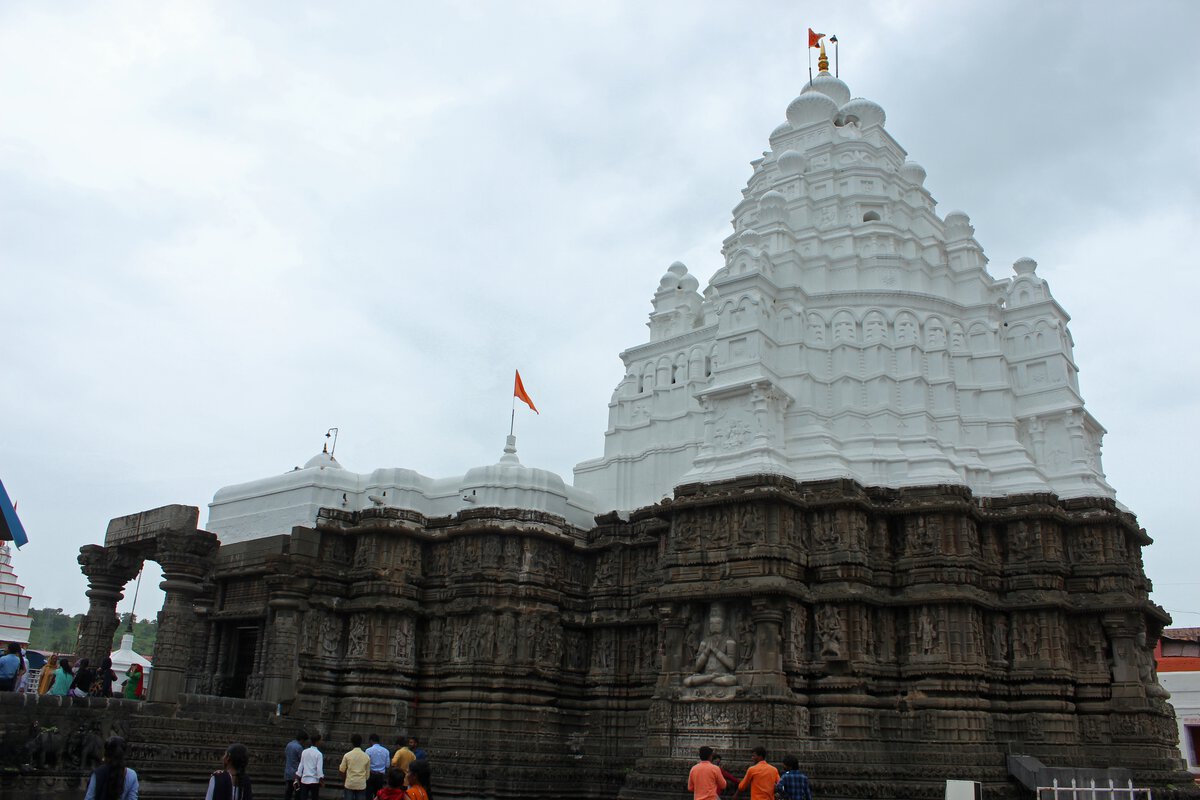
The temple is a significant pilgrimage site for followers of Shaivism, a major tradition within Hinduism that reveres Lord Shiva as the Supreme Being.
The architecture of the Aundha Nagnath Temple is a blend of Hemadpanthi and Yadava styles, named after the medieval architect Hemadri, also known as Hemadpant. The Hemadpanthi style is known for its use of black stone and lime, which makes the structure sturdy and weather-resistant. The Yadava style, on the other hand, is characterised by its intricate carvings and detailed sculptures. Together, these styles create a unique and visually stunning temple.
As mentioned above, every Jyotirlinga in Maharashtra is unique, and each of their temples has its own charm. One of the distinctive features of the Aundha Nagnath Temple is its underground sanctum or garbhagriha. That is where the main deity, the Shiva Linga, is enshrined. The underground setting of the sanctum adds a mystical and serene ambience to the temple, enhancing the spiritual experience for devotees.
The temple is adorned with beautiful carvings that depict various stories and legends from Hindu mythology, particularly those associated with Lord Shiva. These carvings not only serve as a testament to the artistic skill of the craftsmen but also as a medium for conveying religious and cultural narratives.
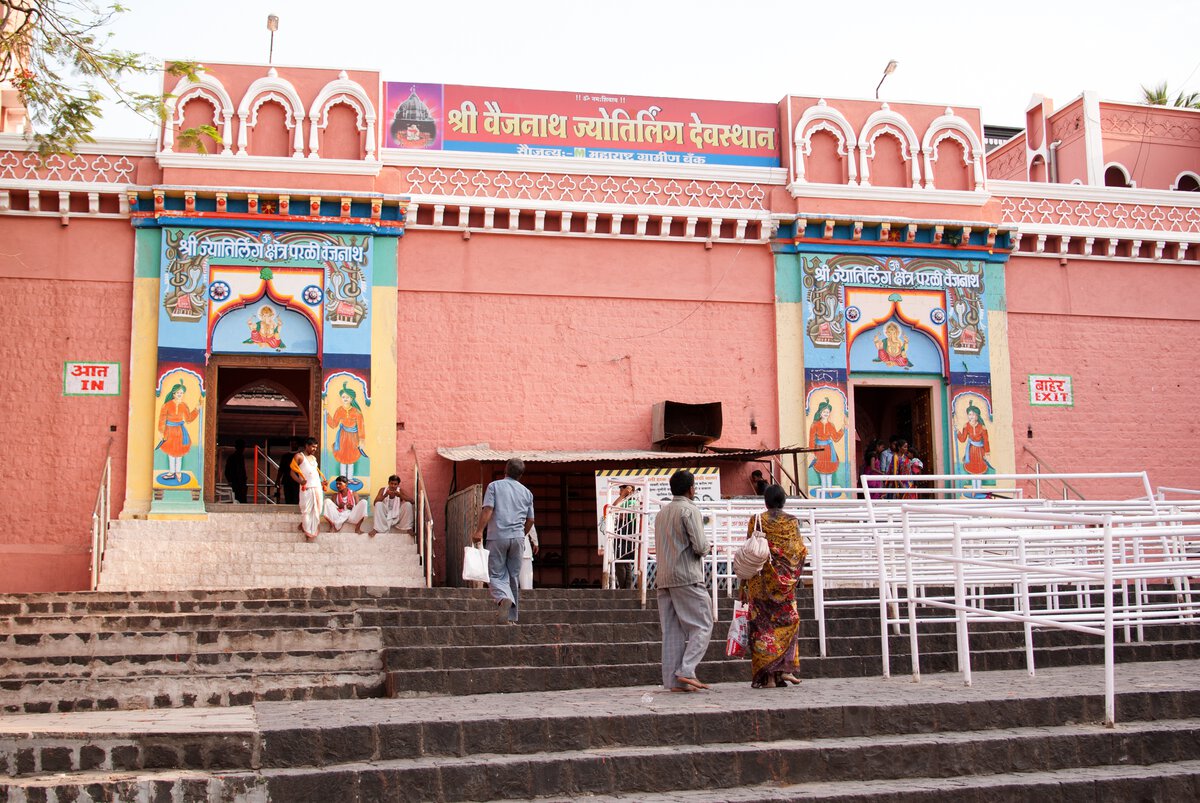
The temple's architecture is a marvel, showcasing the grandeur of ancient Indian temple design. The spacious courtyard provides a serene and open space for devotees to gather and perform rituals. The walls and pillars of the temple are adorned with intricate carvings that depict various scenes from Hindu mythology, adding to the temple's aesthetic and spiritual appeal.
One of the most significant events at the Vaijnath Temple is the annual Mahashivratri festival. This festival, dedicated to Lord Shiva, attracts thousands of devotees from across the country. During Mahashivratri, the temple is beautifully decorated, and special prayers and rituals are conducted throughout the night. Devotees flock to the temple to offer their prayers, seek blessings, and partake in the vibrant and spiritual atmosphere.
As you read, the 5 Jyotirlingas in Maharashtra are significant religious sites and marvels of ancient architecture and natural beauty. Each temple has its unique history, spiritual significance, and architectural grandeur, attracting devotees and tourists worldwide.
Visiting these Jyotirlingas is a pilgrimage and a journey through Maharashtra's diverse landscapes and vibrant spirituality.
Are you ready for this one-of-a-kind journey?
This Mahashivratri, embark on a spiritual journey to explore the 5 Jyotirlingas in Maharashtra. Enhance your experience with a Club Mahindra Membership, granting you access to luxurious accommodations and exclusive offers, making your pilgrimage both comfortable and memorable as you connect with the divine in a serene setting.
Mahindra Holidays & Resorts India Ltd. (MHRIL), a part of Leisure and Hospitality sector of the Mahindra Group, offers quality family holidays primarily through vacation ownership memberships and brings to the industry values such as reliability, trust and customer satisfaction. Started in 1996, the company's flagship brand ‘Club Mahindra’, today has over 300,000 members , who can holiday at 140+ resorts in India and abroad.
We use cookies to personalise content and to provide you with an improved user experience.By Continuing to browse this site you consent to the use of cookies.Please visit our cookie policy for further details.

Welcome to ClubMahindra.com In order to provide a personalised experience for you, we use cookies to enable some website functionality. Cookies help us see which articles most interest you; allow you to easily share articles on social media channels; permit us to deliver content personalised to your interests and locations; along with many other site benefits. For more information, please review our Cookie Policy
When you visit any website, it may store or retrieve information on your browser, mostly in the form of cookies. This information might be about you, your preferences or your device and is mostly used to make the site work as you expect it to. The information does not usually directly identify you, but it can give you a more personalized web experience. Because we respect your right to privacy, you can choose not to allow some types of cookies. Click on the different category headings to find out more and change our default settings. However, blocking some types of cookies may impact your experience of the site and the services we are able to offer.
Because we respect your right to privacy, you can choose not to allow some types of cookies and you have the right to withdraw your consent by send a mail to email id [email protected]
These cookies are essential in order to enable you to move around the site and use its features, such as accessing secure areas of the site. Without these cookies, services you have asked for cannot be provided.
These cookies allow us to employ data analytics so we can measure and improve the performance of our site and provide more relevant content to you. These cookies don't collect information that identifies a visitor down to an individual level that is available to us. These cookies are not passing personally identifiable information to any external third party other than in limited cases when we engage a service provider to act on our behalf but who is then unable to use the data for their own purposes.
Performance cookies are generally third-party cookies from vendors we work with or who work on our behalf that collect information about your visit and use of the Club Mahindra website, for instance which pages you visit the most often, and if you get error messages from web pages. These cookies don't collect information that identifies a visitor. All information these cookies collect is anonymous and is only used to improve your overall experience on how the website works. Third party vendors may have access to this data and may use it to improve their overall services and offerings.
Functionality cookies allow a site to remember choices you make (such as your user name, language or the region you are in) and provide more enhanced, personal features. These cookies cannot track your browsing activity on other websites. They don't gather any information about you that could be used for advertising or remembering where you've been on the Internet outside our site.
Third-party advertising and social media cookies are used to (1) deliver advertisements more relevant to you and your interests; (2) limit the number of times you see an advertisement; (3) help measure the effectiveness of the advertising campaign; and (4) understand people's behaviour after they view an advertisement. They are usually placed on behalf of advertising networks with the site operator's permission. They remember that you have visited a site and quite often they will be linked to site functionality provided by the other organization. This may impact the content and messages you see on other websites you visit. If you do not allow these cookies you may not be able to use or see certain these sharing tools content on our website.